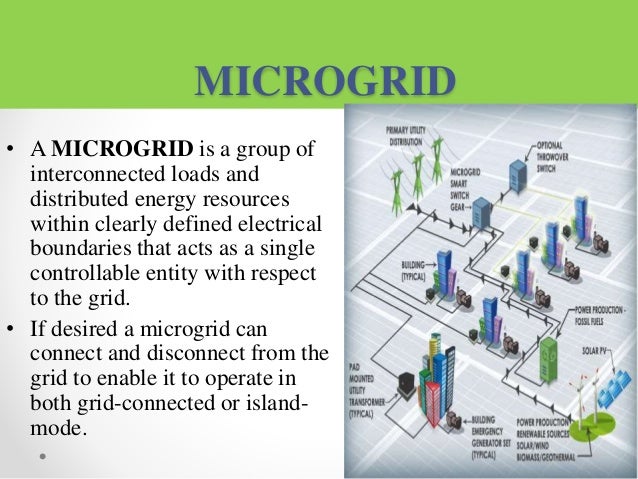

Renewable generation like solar and wind.Microgrids typically contain a range of components: Way short, with a much higher waste of energy and opportunity than there should be. Unfortunately, that sells the possibilities of the microgrid short. But most of those focus on delivering electricity and reliability.


There is a lot of discussion about microgrids and their future and impact on the electrical industry. The ideal microgrid is not just a technology to generate power, but a way to manage an entire habitat. In fact, according to a recent analysis by Navigant Research, revenue from the (currently) niche market of energy storage for micro-grids is worth $US662 million in 2014, and will be $US4 billion by 2024.EnerNex’s Doug Houseman explains how we sell microgrids short. The community-scale models could be cost-effective before 2020 for the mass market, and battery costs seem to be moving faster than assumed. Operating either as part of the traditional grid or independently (or both), Micro-grids are revolutionising the way we manage our energy resources. That’s why organisations and utilities are working together to build resilient, flexible power systems called Micro-grids. But when natural disasters or security breaches threaten the grid, the ensuring blackouts can be catastrophic and costly. The traditional power grid provides reliable power - most of the time. By way of example, the trend is being led by new Indian Prime Minister Narendra Modi, who aims to increase solar’s contribution to the Indian energy mix from 1 per cent to 5 per cent within seven years (likely to be extremely conservative, given the figures now coming out of both countries are large enough to create critical mass).Īs for Australia, it looks as though it’s likely to be politics which pushes the early adopters and, potentially, also the early majority, to take the next steps towards micro-grids at scale. Meanwhile, the developing world increasingly views solar, and ‘village-scale’ micro-grids, as an obvious and cost-effective choice for its vast, distributed populations. In fact, according to recent analysis by Navigant Research, revenue from the (currently) niche market of energy storage for micro-grids is worth $US662 million in 2014, and will be $US4 billion by 2024. The community scale models could be cost-effective before 2020 for the mass-market, and battery costs seem to be moving faster than assumed. These reliable, emergency-ready systems can lead to fewer blackouts, greater cost savings, and less dependence on fossil fuels. Organisations and communities with an absolute need for dependable energy are looking to the Micro-grid as an efficient, powerful, and ingenious solution. That’s why organisations and utilities are working together to build resilient, flexible power systems called Micro- grids. But when natural disasters or security breaches threaten the grid, the ensuing blackouts can be catastrophic and costly. The Micro-grid has greatly weakened the role of electric grids and intermediaries, thereby providing investors with more lucrative returns.
Sell micro grids generator#
In general, Micro-grids have made it possible for power generator to provide power to users directly. A switch can separate the Micro-grid from the main grid automatically or manually, and it then functions as an island. Depending on how it’s fuelled and how its requirements are managed, a micro-grid might run indefinitely.Ī Micro-grid connects to the grid at a point of common coupling that maintains voltage at the same level as the main grid unless there is some sort of problem on the grid or other reason to disconnect. The grid connects homes, businesses and other buildings to central power sources, which allow users to use electronics.Ī Micro-grid generally operates while connected to the grid, but importantly, it can break off and operate on its own using local energy generation in times of crisis like storms or power outages, or for other reasons.Ī Micro-grid can be powered by distributed generators, batteries, and/or renewable resources like solar panels. A Micro-grid is a local energy grid with control capability, which means it can disconnect from the traditional grid and operate autonomously.


 0 kommentar(er)
0 kommentar(er)
